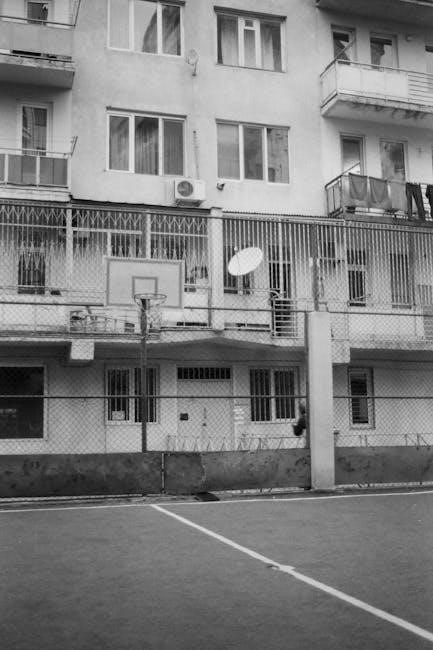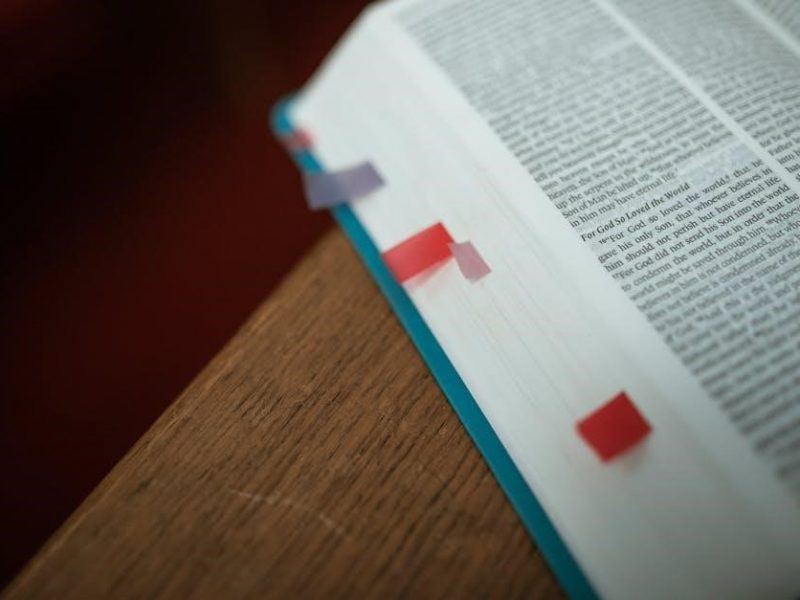Apartment fence design must consider wind load to ensure stability and durability․ Wind pressure varies with speed, geometry, and exposure, impacting structural integrity․ Proper materials and engineering are essential for safety and aesthetic appeal, balancing functionality with design․
1․1 Importance of Wind Load in Fence Design
Wind load is a critical factor in fence design, ensuring structural integrity and preventing damage from high-speed winds․ It determines the pressure exerted on the fence, influenced by speed, geometry, and exposure․ Ignoring wind load can lead to costly repairs or complete failure․ Proper calculation and consideration of wind forces ensure the fence withstands environmental stresses․ Building codes and standards, like ASCE 7-22, provide guidelines for wind-resistant designs․ Understanding wind load helps in selecting appropriate materials and engineering solutions, ensuring safety and durability․ This fundamental aspect guarantees the fence remains stable and secure, protecting the property and occupants from potential hazards․
1․2 Overview of Apartment Fence Design
Apartment fence design balances functionality, aesthetics, and community guidelines to enhance privacy and security․ Modern designs often incorporate durable materials like vinyl, metal, or wood, ensuring longevity․ Fences serve as boundaries while complementing the property’s architecture․ Wind load considerations are integral, as high-speed winds can damage structures․ Design trends include decorative elements and modular systems for versatility․ Proper installation and material selection ensure stability and resistance to environmental factors․ Apartment fences also act as noise barriers and visual screens, improving residents’ quality of life․ A well-designed fence enhances curb appeal and property value, making it a crucial element in urban and suburban landscapes․
Understanding Wind Load and Its Impact on Fences
Wind load refers to the force exerted by wind on structures, significantly impacting fences․ Higher wind speeds increase pressure, potentially causing damage or collapse if not properly designed․
2․1 Factors Affecting Wind Pressure on Fences
Wind pressure on fences is influenced by several factors, including wind speed, fence geometry, and exposure conditions․ Higher wind speeds significantly increase pressure, while taller fences face greater force due to increased surface area․ The shape and design of the fence, such as solid panels versus open slats, also impact wind resistance․ Additionally, the surrounding environment, like nearby buildings or open terrain, affects wind flow patterns․ Material density and post spacing play roles in distributing the load․ Local building codes often provide guidelines based on regional wind speeds, ensuring designs withstand area-specific conditions․ Understanding these factors is critical for durable fence construction․
2․2 Calculation of Wind Load on Apartment Fences
The calculation of wind load on apartment fences involves determining the pressure exerted by wind on the structure․ The formula P = 0․00256 * V² * Kd * If is commonly used, where P is the wind pressure, V is the wind speed, Kd is the drag coefficient, and If is the importance factor․ According to ASCE 7-22, the design wind speed is based on local conditions, and the fence’s height and area are critical factors․ For example, an 8-foot-high fence with a solid design experiences higher pressure than an open-style fence․ Engineers often use wind tunnel tests to refine calculations, ensuring the fence’s structural integrity and compliance with building codes․ Accurate wind load calculation is essential for safe and durable fence design․
2․3 Wind Speed and Its Relation to Fence Design
Wind speed significantly influences apartment fence design, as higher velocities increase the structural load․ According to ASCE 7-22, wind speed varies by location and elevation, requiring site-specific calculations․ The design wind speed is often based on a 50-year return period, ensuring the fence can withstand extreme conditions․ For instance, a fence in a coastal area with high winds may require deeper footings and stronger posts compared to one in a sheltered location․ The relationship between wind speed and fence design involves balancing material strength, post spacing, and panel rigidity to resist forces without compromising aesthetic appeal․ Accurate wind speed data is crucial for optimal design․
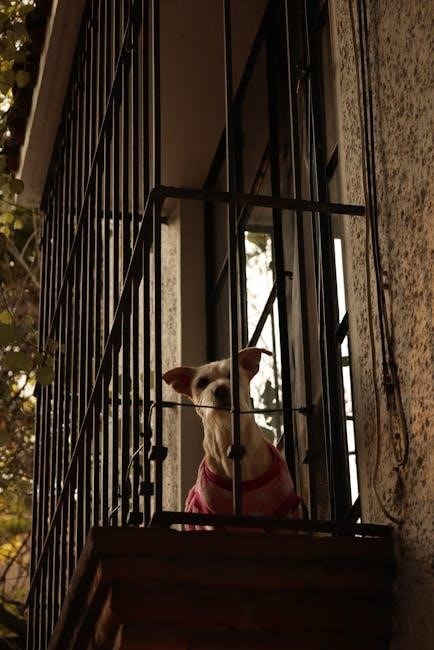
Design Criteria for Apartment Fences
Apartment fences must adhere to strict design criteria, focusing on durability, safety, and aesthetic appeal․ Proper material selection, structural integrity, and compliance with building codes ensure long-term performance and resistance to environmental factors like wind and weather;
3․1 General Design Principles for Wind Resistance
Wind-resistant apartment fence designs prioritize streamlined shapes and sturdy materials․ Open or perforated panels reduce wind pressure, while robust post-and-footing systems enhance stability․ Regular inspections and maintenance ensure longevity, preventing damage from high winds․ Compliance with local building codes and engineering standards is crucial for safety and structural integrity․ By integrating these principles, fences can withstand harsh weather conditions effectively, ensuring both functionality and aesthetic appeal over time․
3․2 Role of Fence Geometry and Exposure
Fence geometry and exposure significantly influence wind load resistance․ Open or perforated designs reduce pressure by allowing wind to pass through, while solid panels can create higher loads․ The shape and height of the fence, as well as its placement in open or sheltered areas, affect wind force distribution․ Exposure conditions, such as proximity to buildings or trees, also play a role in altering wind patterns․ Understanding these factors helps in optimizing fence design for better wind resistance, ensuring stability and minimizing potential damage from strong gusts or storms․ Proper geometry and placement are critical for enhancing durability and safety in windy environments․
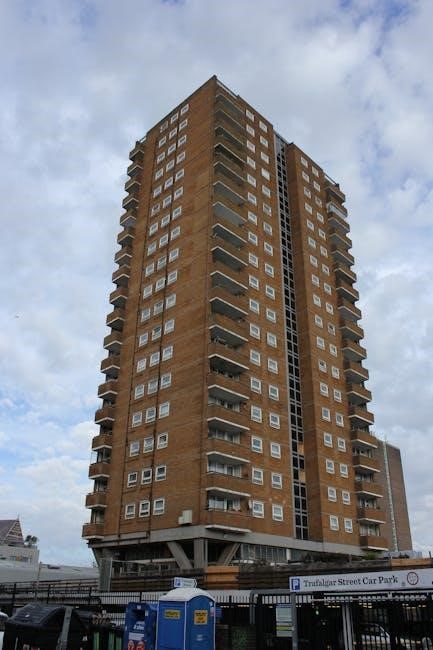
3․3 Selection of Materials for Wind-Resistant Fences
Selecting the right materials is crucial for building wind-resistant fences․ Durable options like aluminum, steel, and high-quality vinyl are preferred due to their strength and ability to withstand harsh conditions․ Aluminum is lightweight yet robust, while steel offers superior durability with proper coatings to prevent rust; Vinyl fences are low-maintenance and can flex under wind pressure, reducing damage․ The choice of material should also consider factors like weight, flexibility, and exposure to environmental elements․ Additionally, finishes and coatings play a significant role in enhancing longevity․ Proper material selection ensures the fence remains stable and secure, even in high-wind areas, making it a critical aspect of wind-resistant design․

Building Codes and Standards for Wind Load Design
Building codes like ASCE 7-22 and AS 1170․2 provide essential guidelines for calculating wind loads, ensuring fences are designed to withstand local wind conditions safely․
4․1 Overview of Relevant Building Codes
Relevant building codes for wind load design include ASCE 7-22 and AS 1170․2, which provide detailed guidelines for calculating wind pressures and structural requirements․ These codes ensure that fences are designed to withstand various wind conditions, considering factors like speed, exposure, and material strength․ Compliance with these standards is crucial for safety and durability, especially in high-wind areas․ They also outline methods for determining design wind speeds and load calculations, helping engineers and designers create resilient structures that meet local building regulations and protect against wind-related damage․
4․2 ASCE 7-22 Wind Load Provisions
ASCE 7-22 provides detailed provisions for calculating wind loads on structures, including apartment fences․ It outlines factors such as wind speed, exposure categories, and topography to determine design pressures․ The standard includes maps for basic wind speeds and offers methods for calculating wind loads, ensuring fences are designed to resist wind forces․ Compliance with ASCE 7-22 is essential for safety and durability, particularly in high-wind regions․ The provisions also address fence height, material type, and post spacing to optimize structural integrity․ By following ASCE 7-22, designers can ensure fences meet wind load requirements while maintaining aesthetic and functional goals․
4․3 Compliance with Local Building Regulations
Compliance with local building regulations is crucial for ensuring apartment fence designs meet wind load requirements․ Local codes often include specific guidelines for fence height, material selection, and structural integrity based on regional wind conditions․ Obtaining necessary permits and adhering to zoning laws is essential․ Additionally, local regulations may require site-specific wind studies or engineering certifications to validate designs․ Regular inspections and approvals from local authorities ensure that fences are constructed safely and durably․ Compliance not only guarantees structural stability but also avoids legal issues and potential safety hazards․ By aligning with local building standards, apartment fences can withstand wind forces while meeting community aesthetic expectations․
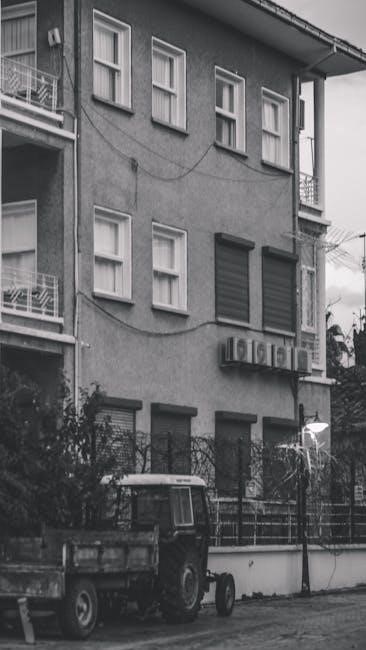
Installation and Footing Design for Wind Resistance
Proper installation and footing design are critical for wind resistance․ Deep, reinforced footings distribute wind forces, preventing uplift and ensuring stability․ Secure post anchorage enhances structural integrity and durability․
5․1 Importance of Proper Installation
Proper installation is crucial for ensuring apartment fences withstand wind loads effectively․ Incorrect installation can lead to structural weaknesses, making the fence more susceptible to damage from wind pressure․ Factors such as post depth, footing strength, and secure panel attachments are vital to prevent toppling or strain․ Materials also play a role; lightweight materials may require extra care to avoid acting like sails in the wind․ Following specific guidelines or building codes can help ensure installations meet wind resistance standards․ Maintenance is also essential to address environmental impacts like soil erosion or material degradation over time․ Regular inspections can help maintain stability and safety, preventing potential hazards from wind forces․
5․2 Design of Footings for Wind-Resistant Fences
Designing durable footings is essential for wind-resistant fences, as they transfer wind forces to the ground․ Footings must be tailored to soil conditions and local building codes to prevent shifting or uplift․ The depth and width of footings depend on the fence’s height and the expected wind speed․ Concrete footings are commonly used, with reinforcement to enhance strength․ Proper drainage is also critical to avoid water accumulation, which can weaken the structure․ Additionally, the footing design should account for the weight and distribution of the fence panels․ Ensuring the footings are engineered correctly is vital to maintain stability and prevent failure during strong winds․
5․3 Post Spacing and Size Considerations
Post spacing and size are critical for ensuring the structural integrity of apartment fences under wind load․ Proper spacing minimizes deflection and prevents excessive stress on individual posts․ Wider post spacing can reduce material costs but may compromise wind resistance․ The size of the posts should be proportional to the fence height and panel width, with larger posts recommended for taller fences․ Material strength and thickness also play a role in determining post size․ Local building codes and wind load calculations should guide these decisions to ensure safety and durability․ Balancing aesthetics with functionality is key to achieving a stable and visually appealing fence design․
Materials and Durability in Wind Load Conditions
Durable materials like aluminum, vinyl, and wood are essential for withstanding wind loads․ Their strength and flexibility ensure long-lasting performance․ Protective finishes enhance resistance to harsh conditions․
6․1 Common Materials Used for Apartment Fences
Common materials for apartment fences include aluminum, vinyl, wood, and chain-link․ Aluminum and vinyl are popular for their durability and low maintenance, while wood offers a natural aesthetic․ Chain-link fences are cost-effective and provide flexibility against wind forces․ Each material has unique properties that contribute to wind resistance, ensuring structural integrity under various conditions․ Proper material selection is critical to balance aesthetics, durability, and wind load resilience, making them suitable for apartment settings․ These materials are widely recommended due to their proven performance in different environmental conditions․
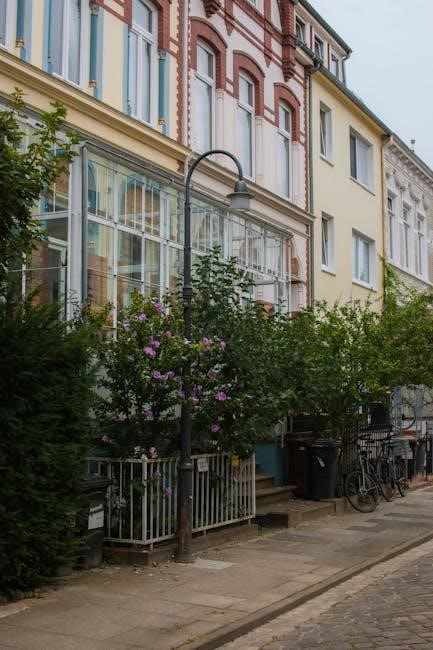
6․2 Finishes and Coatings for Enhanced Durability
Finishes and coatings play a crucial role in enhancing the durability of apartment fences, particularly in windy conditions․ Powder coating, galvanization, and weather-resistant paints are commonly used to protect materials like metal and wood from corrosion and wear․ These finishes not only extend the lifespan of the fence but also improve its ability to withstand harsh weather conditions․ Coatings can reduce the impact of wind-borne debris and moisture, ensuring the fence remains structurally sound․ Properly applied finishes also maintain the aesthetic appeal of the fence, making them a practical choice for apartment complexes exposed to high winds and varying environmental factors․
6․3 Impact of Material Choice on Wind Resistance
The choice of material significantly influences a fence’s ability to resist wind loads․ Durable materials like steel, aluminum, and high-density polymers are ideal for withstanding high winds․ Lightweight materials may fail under extreme pressure, while heavier options provide stability but require stronger footings․ Porous materials, such as wood with open designs, can reduce wind pressure by allowing air to pass through․ The density and flexibility of the material also play a role, as rigid materials may crack under force, whereas flexible ones can absorb it․ Selecting the right material ensures the fence can endure wind forces without compromising its structural integrity or aesthetic appeal․
Case Studies and Examples
Real-world applications of wind-resistant fence designs highlight successful implementations and lessons learned, offering practical insights for architects and engineers in optimizing apartment fence systems․
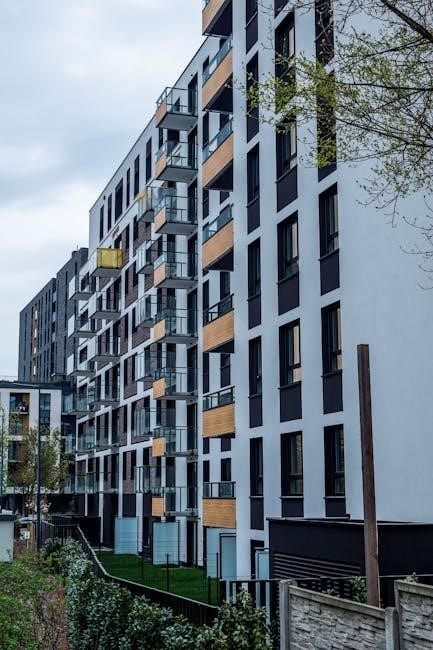
7․1 Residential Apartment Fence Designs
Residential apartment fence designs often prioritize both aesthetics and functionality․ Modern designs incorporate materials like aluminum and vinyl, which offer durability while maintaining a sleek appearance․ Open-picket styles are popular as they allow wind to pass through, reducing pressure․ In coastal areas, fences are frequently designed with horizontal slats to enhance wind resistance․ Case studies reveal that proper post spacing and footing depth are critical for stability․ Additionally, integrating greenery or decorative elements can improve both curb appeal and structural integrity․ These designs serve as practical examples for achieving balance between form and function in challenging wind conditions․
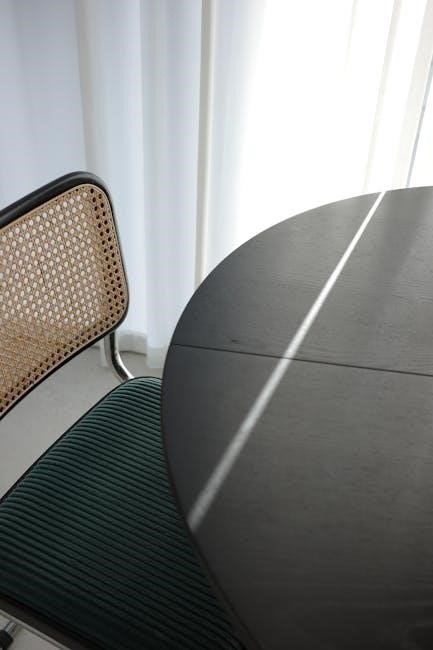
7․2 Lessons Learned from Wind-Related Failures
Wind-related failures in apartment fences highlight the importance of proper design and installation․ Many failures occur due to inadequate post spacing, insufficient footing depth, and poor material choices․ For instance, lightweight materials without reinforced frames often collapse under high winds․ Insufficient consideration of local wind speed regulations is another common issue․ Additionally, neglecting regular maintenance can lead to structural weaknesses․ Analyzing these failures emphasizes the need for adherence to building codes and thorough engineering․ By addressing these shortcomings, future designs can be more resilient, ensuring safety and longevity․ These lessons underscore the critical role of wind load calculations in fence design and construction․
7․3 Modern Design Trends in Wind-Resistant Fences
Modern trends in wind-resistant fence design focus on aerodynamics and innovative materials․ Sleek, perforated panels reduce wind pressure by allowing airflow, while curved or angled designs disrupt wind forces․ Durable materials like reinforced polymers and high-strength alloys are gaining popularity for their resilience․ Integration of technology, such as flexible hinges, enhances adaptability to strong winds․ Sustainable options, including recycled metals, are also favored for eco-conscious projects․ These designs balance aesthetics with functionality, ensuring both visual appeal and structural integrity․ By combining advanced engineering with creative solutions, modern fences effectively withstand harsh wind conditions while maintaining a contemporary look, meeting both practical and stylistic demands for apartment complexes․
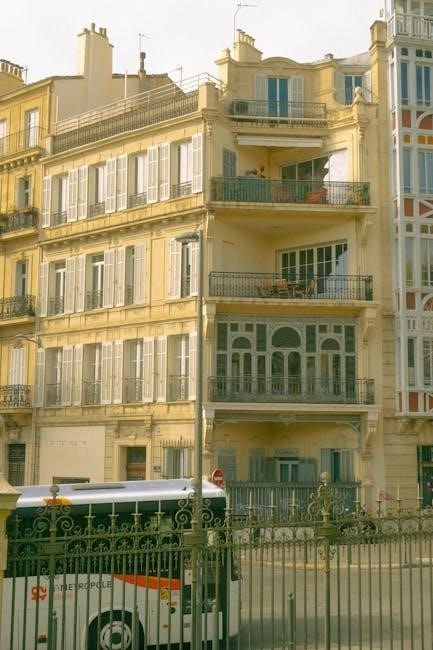
Maintenance and Inspection
Regular inspection and maintenance are crucial for ensuring fence durability․ Check for damage, tighten loose parts, and repaint surfaces to withstand wind and weather conditions effectively․
8․1 Regular Inspection Requirements
Regular inspections are vital to identify potential issues early․ Check for loose posts, damaged panels, and corrosion․ Ensure all connections are secure and free from rust․ Inspect after severe weather events like storms or heavy rains, as high winds can cause hidden damage․ Look for warping or bending in the fence structure, which may indicate wind load stress․ Pay attention to the foundation and footings, ensuring they remain stable and undamaged․ Document findings and address repairs promptly to maintain the fence’s integrity and resistance to wind forces․ Regular maintenance helps prevent costly repairs and extends the fence’s lifespan․
8․2 Repair and Maintenance Tips
Regular maintenance is key to extending the life of apartment fences; Inspect for damage after severe weather and address issues promptly․ Tighten loose screws or bolts, and replace damaged panels to prevent further deterioration․ Apply protective coatings to metal components to resist corrosion․ For wooden fences, consider resealing or repainting to protect against moisture․ Ensure proper drainage around footings to prevent erosion․ Trim nearby vegetation to reduce wind-borne debris impact․ Address minor repairs before they escalate to avoid costly overhauls․ Consistent upkeep ensures the fence remains structurally sound and visually appealing, while also maintaining its wind resistance capabilities over time․
8․3 Upgrading Fences for Improved Wind Resistance
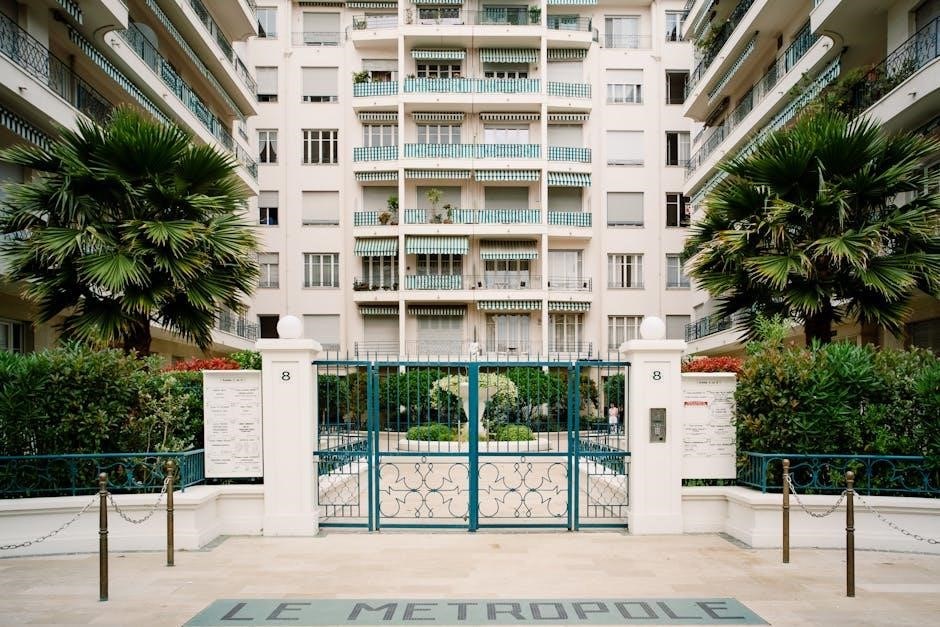
Upgrading apartment fences for better wind resistance involves assessing current designs and materials․ Strengthening the structure with reinforced posts and deeper footings can enhance stability․ Adding mid-rails or diagonal braces improves rigidity, while using wind-resistant materials like metal or durable composites minimizes damage․ Increasing post spacing or switching to a lattice design allows wind to pass through, reducing pressure․ Applying protective coatings to metal parts prevents corrosion․ Consulting local building codes ensures compliance with wind load standards․ Modernizing the fence’s geometry, such as rounded edges, can also mitigate wind force impact․ These upgrades not only boost resilience but also maintain the aesthetic appeal of the property․
